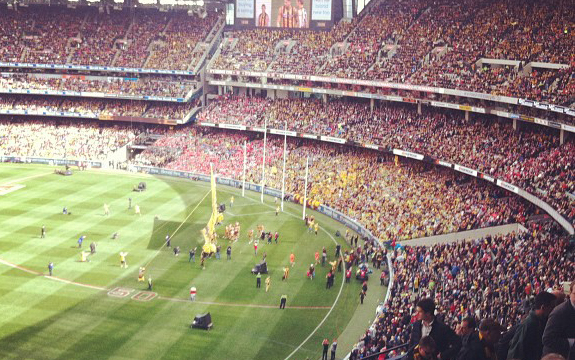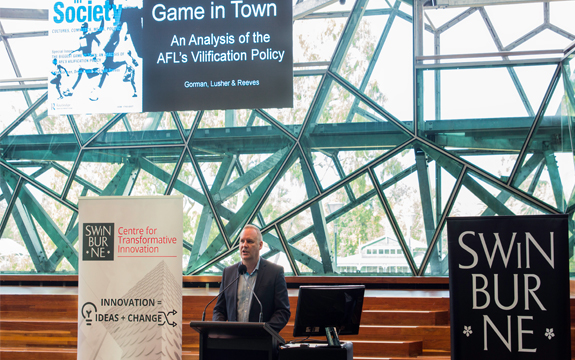AFL vilification policy: What’s working, what’s not?

In Summary
- Vilification still remains in the AFL
- Study involved more than 400 players, coaches and staff
- Involved Swinburne, Curtin and Federation universities
A new book reveals that while on-field player-to-player vilification has been all but eliminated from the Australian Football League (AFL), some forms of prejudice remain.
It’s now been 21 years since Essendon footballer Michael Long was racially abused and the AFL introduced its anti-vilification law, known as Rule 35. Since then, a range of policies and programs has been developed to improve the welfare and wellbeing of all AFL players.
Researchers at Swinburne University of Technology, Curtin University and Federation University examined the cultures of nine AFL clubs. The research involved more than 400 players, coaches and club staff.
“Our goal was to determine how effective the AFL and AFL Players Association education programs have been, since Rule 35 was introduced over two decades ago,” says Swinburne researcher, Dr Dean Lusher.

Dr Dean Lusher presents the key findings from the book
The three-year Australian Research Council project explored issues of racism, attitudes towards women and homophobia.
Key partners in the project were the Australian Football League, the AFL Players’ Association (AFLPA) and the Office of Multicultural Affairs and Citizenship.
“While we found that all players and coaches interviewed understand that on-field vilification is wrong, issues regarding more subtle forms of racism are still not deeply understood by some players,” says lead author Dr Sean Gorman from Curtin University in Perth.
“Some players still could not see that casual racism, including gags like Indigenous footballers ‘running like they stole something’ is an issue,” says Dr Gorman.
The research also uncovered a general lack of understanding among players around the ideas of reconciliation and multiculturalism.
“Given that the AFL has major themed rounds based on reconciliation and multiculturalism, we thought that the answers related to these concepts would be better articulated,” says Dr Lusher.
The study also found that Indigenous players felt more marginalised from their clubs than their non-Indigenous teammates.
“We know that the AFL is seen as a leader in this space internationally by other sporting codes because of the work they and the AFLPA have done. What our research highlights is the need for ongoing efforts to address and educate players around issues of race and vilification” says Dr Lusher.
The research has been compiled in a book, The Biggest Game in Town: An analysis of the AFL’s vilification policy, to be launched on Wednesday 25 May.
The launch coincides with the AFL’s Indigenous Round, which this year will be named in honour of Aboriginal great Sir Doug Nicholls.

